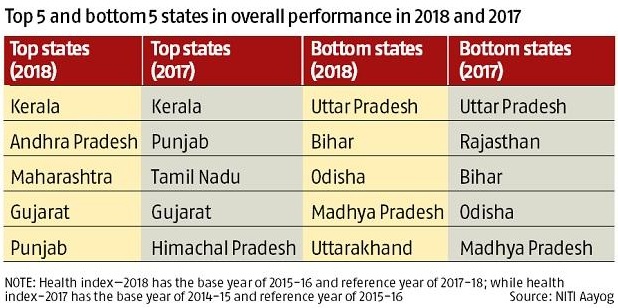7667766266
enquiry@shankarias.in
Why in news?
The second edition of NITI Aayog’s Health Index was recently released in its report titled ‘Healthy States, Progressive India: Report on Rank of States and UTs’.
What is the index on?
What are the report highlights?

What does the trend imply?
What is the way forward?
Source: The Hindu